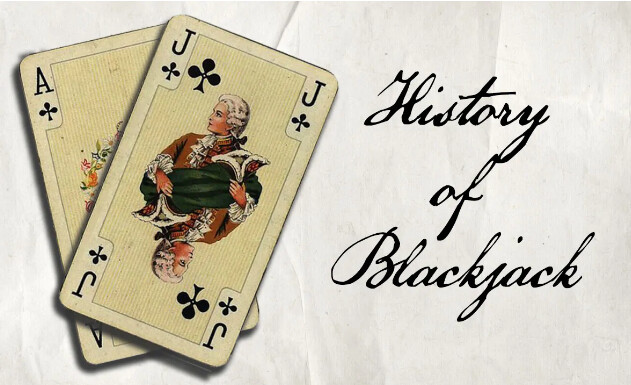
Origins of “21”
The game that would become known as Blackjack has roots in a popular European card game called “21” (also referred to as “Vingt-et-Un” in French). “21” was first documented in the 17th century and was a simple card game where the goal was to get as close as possible to 21 points without exceeding it, using the values of the cards. The game spread throughout Europe, and variations of it were played in Spain, France, and Italy.
The rules for “21” were relatively straightforward: cards 2-10 were valued at their face value, face cards (Jack, Queen, and King) were valued at 10 points, and Aces could be worth either 1 or 11 points. The game gradually made its way to the United States.
Arrival in the U.S.
When French colonists brought “21” to New Orleans in the 18th century, it became quite popular in American gambling establishments. However, it wasn’t until the early 19th century, around the 1800s, that the game really began to evolve and spread across the U.S., especially in riverboat casinos along the Mississippi River.
The Birth of “Blackjack” as We Know It
In the late 19th century, casinos in Nevada and other parts of the U.S. started seeking ways to increase the appeal of the game and attract players. To promote the game and encourage people to try it, a special rule was introduced: if a player had an Ace of Spades and a black Jack (the Jack of Spades or Clubs), that hand would pay out at 10-to-1 odds instead of the regular 1-to-1 payout for a regular 21.
This high payout for a specific combination of cards (Ace and a black Jack) is where the game got its name: Blackjack. While the 10-to-1 payout for a black Jack hand was eventually discontinued, the name stuck.
Modern Blackjack and Rule Standardization
By the early 20th century, Blackjack had evolved to resemble the game we know today. Over time, more standard rules were introduced to make gameplay more consistent. Some of the key developments include:
- Doubling Down: Players were allowed to double their original bet after receiving their first two cards in certain situations (usually if they had a total of 9, 10, or 11 points).
- Splitting Pairs: Players could split a pair of cards (e.g., two 8s) into two separate hands, each with its own bet, and continue to play each hand independently.
- Dealer Rules: The dealer must “hit” (take an additional card) if their hand totals 16 or less and must “stand” (not take any more cards) if their hand totals 17 or more.
- Blackjack Payouts: If a player gets an Ace and a 10-point card (Jack, Queen, King, or 10) as their first two cards, they win at a standard payout of 3-to-2.
Evolution of Strategy and the Card Counting Phenomenon
In the 1950s and 1960s, casinos began to develop strategies for improving the odds in their favor, and that’s when the famous “card counting” techniques started becoming known. Card counters track the ratio of high cards (10s, face cards, and Aces) to low cards remaining in the deck. This can help them determine when the odds are more favorable for the player, allowing them to make larger bets when the deck is rich in high cards. This led to the birth of advanced Blackjack strategy, a key element for professional Blackjack players today.
Blackjack in Modern Casinos
Blackjack quickly became one of the most popular casino games worldwide due to its relatively low house edge (if played with optimal strategy). It’s commonly played with one or more decks of cards, and many casinos offer both single-deck and multi-deck variations.
The game has also been featured in numerous movies, books, and even inspired famous Blackjack teams like the MIT Blackjack Team, who used card counting to win millions in Las Vegas in the 1980s and 1990s. These players became legends for outsmarting the casinos with their skill.
Online Blackjack
With the rise of online casinos in the late 20th and early 21st centuries, Blackjack was one of the first games to make the transition to digital platforms. Online Blackjack often offers a variety of rule variations and game formats, like live dealer Blackjack, where real dealers run games streamed in real-time.
Fun Fact:
Did you know that the highest possible hand in Blackjack (known as a “Blackjack”) is an Ace and a 10-point card, which gives you 21 right off the bat? That’s considered the best hand you can get, and it’s usually rewarded with a special payout!
